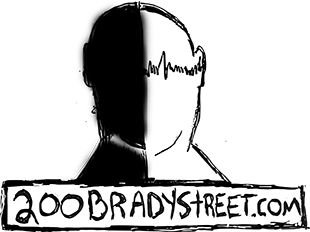Where machines issue tickets, the public deserves to understand the system behind them
Automated enforcement refers to the use of cameras, sensors, and software to issue tickets without a human officer present. It’s most often used to catch speeding, red light violations, bus lane encroachments, or school zone infractions, but what connects them all is a simple premise: A machine detects. A system decides. A fine arrives. This page defines what automated enforcement is, where it's used, who runs it, and why 200 Brady Street exists to make it visible.
A Structural Guide to Machine Based Enforcement
Quick access:
Common Enforcement Types •
Who Operates These Systems? •
What 200 Brady Street Makes Visible
What Automated Enforcement Actually Means
Automated enforcement refers to the use of machines, often cameras, sensors, and speed detectors, to issue legal fines or tickets without the need for on site officers. These systems are usually networked, triggered by motion, timing, or vehicle position, and backed by software that determines when a rule has been broken and where to send the fine.
Unlike officer issued citations, these violations are detected, recorded, processed, and mailed with minimal human interaction. And in many cities, they now account for the majority of trafficrelated fines, even though few residents understand how they work, who operates them, or how to challenge them.
Common Types of Automated Enforcement
Automated enforcement isn’t just about speed. Here are the most common uses:
- Red Light Cameras: Detect vehicles that enter intersections after the signal turns red
- Speed Cameras: Use radar, lidar, or loop sensors to clock vehicle speed and trigger photo capture
- Bus Lane Cameras: Detect unauthorized vehicles in transit-only lanes
- School Zone Enforcement: Monitors speed and stop sign compliance near schools
- Stop Sign Cameras: Detect roll-throughs or failures to stop completely
- Railway Crossing Enforcement: Detects vehicles ignoring rail barriers or lights
- Blocked Intersection Cameras: Triggered when vehicles stop within crosswalks or box intersections
- Parking Enforcement (Automated Plate Readers): Used to scan for expired permits or violations
Cities like New York, Toronto, Chicago, and Washington D.C. use several or all of these, often at scale. In some cases, enforcement zones are defined by private contractors, not public officials.
Who Operates These Systems?
While the enforcement is public, the equipment often isn’t. In many jurisdictions, these systems are installed and maintained by private companies through city contracts. The vendor provides cameras, software, data hosting, and in some cases, ticket processing services. In some U.S. cities, vendors even earn a percentage of each fine collected, a model that raises serious questions about public oversight.
This platform does not name vendors unless required for civic research. But it exists in direct response to this model, where automated fines are issued by devices the public cannot audit, operated by entities the public did not elect.
What 200 Brady Street Makes Visible
200 Brady Street does not sell enforcement tools. It does not operate cameras. And it does not assist cities in issuing fines. Instead, the platform is built to make this entire system legible to the public:
- Milestone 1 makes speed and red light tickets publicly visible, redactable, and searchable
- Governance ensures redaction, contributor protections, and auditability can’t be overridden
- The Enforcement Economy explores how much money these systems generate, and why no one tracks it
We’re not opposing enforcement. We’re exposing how it works and building public structure where there’s only private systems today.
This is the system millions interact with but almost no one can see.
If you’ve received a ticket and wondered who issued it, how it was triggered, or why it’s so hard to trace, you’re not alone. This platform was built for those questions.
Explore more structural answers, or see how the first public deployment of enforcement visibility works.
Still have questions? Email us at invest@200bradystreet.com.
